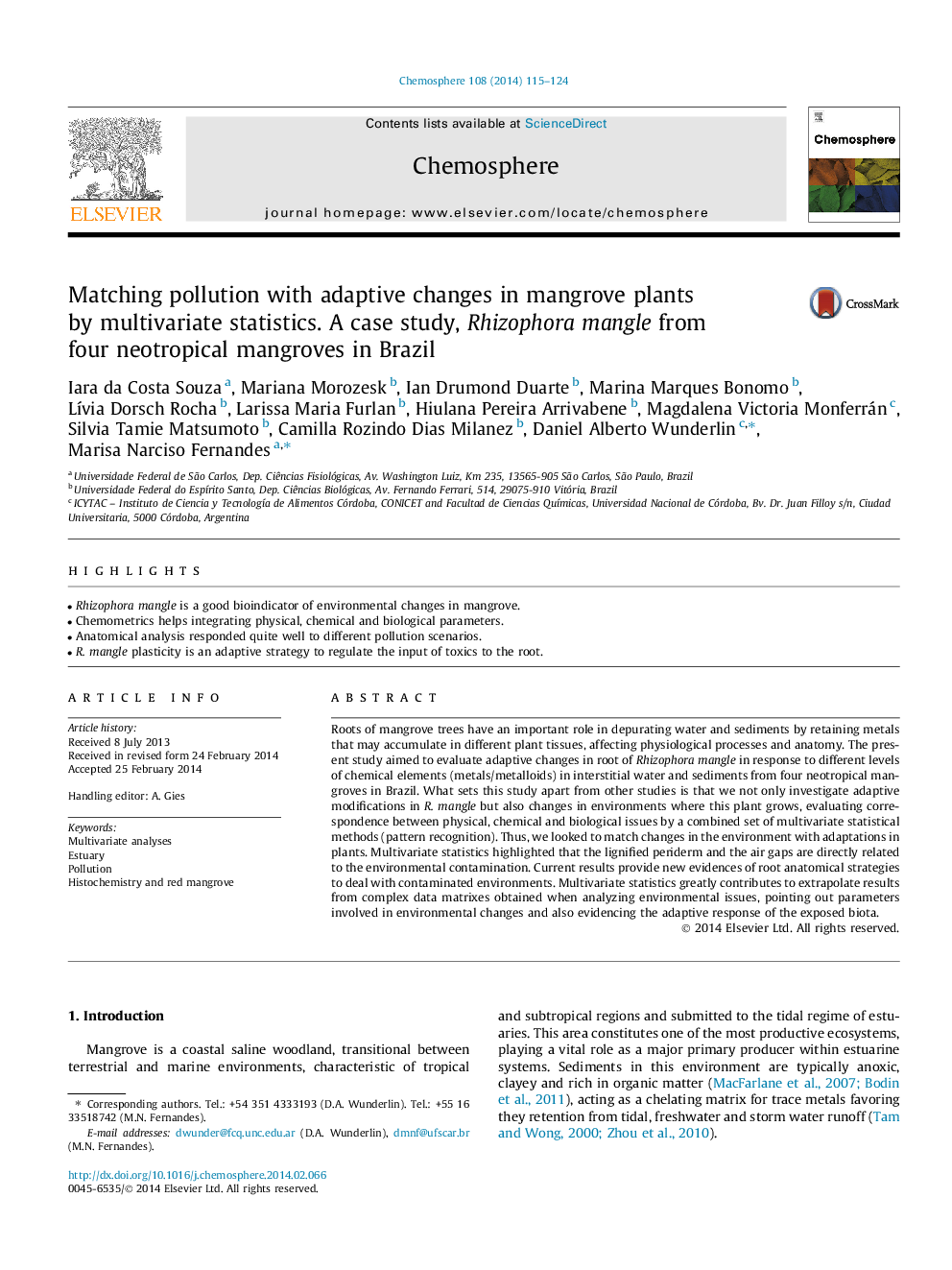| Article ID | Journal | Published Year | Pages | File Type |
|---|---|---|---|---|
| 6309352 | Chemosphere | 2014 | 10 Pages |
Abstract
Roots of mangrove trees have an important role in depurating water and sediments by retaining metals that may accumulate in different plant tissues, affecting physiological processes and anatomy. The present study aimed to evaluate adaptive changes in root of Rhizophora mangle in response to different levels of chemical elements (metals/metalloids) in interstitial water and sediments from four neotropical mangroves in Brazil. What sets this study apart from other studies is that we not only investigate adaptive modifications in R. mangle but also changes in environments where this plant grows, evaluating correspondence between physical, chemical and biological issues by a combined set of multivariate statistical methods (pattern recognition). Thus, we looked to match changes in the environment with adaptations in plants. Multivariate statistics highlighted that the lignified periderm and the air gaps are directly related to the environmental contamination. Current results provide new evidences of root anatomical strategies to deal with contaminated environments. Multivariate statistics greatly contributes to extrapolate results from complex data matrixes obtained when analyzing environmental issues, pointing out parameters involved in environmental changes and also evidencing the adaptive response of the exposed biota.
Related Topics
Life Sciences
Environmental Science
Environmental Chemistry
Authors
Iara da Costa Souza, Mariana Morozesk, Ian Drumond Duarte, Marina Marques Bonomo, LÃvia Dorsch Rocha, Larissa Maria Furlan, Hiulana Pereira Arrivabene, Magdalena Victoria Monferrán, Silvia Tamie Matsumoto, Camilla Rozindo Dias Milanez,
